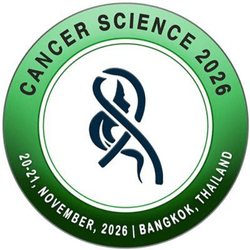Track: Types of Cancer

Lung Cancer
Prevalence: Lung cancer is the leading cause of cancer-related deaths worldwide. It remains one of the most frequently diagnosed cancers, with both non-small cell lung cancer (NSCLC) and small cell lung cancer (SCLC) contributing to its prevalence.
Affected Population: While smoking is the most significant risk factor, non-smokers are also at risk due to environmental exposure, such as air pollution and second-hand smoke. Genetic mutations and exposure to radon or asbestos can also increase the likelihood of developing lung cancer.
Breast Cancer
Prevalence: Breast cancer is the most commonly diagnosed cancer in women worldwide. It is highly prevalent in both developed and developing countries.
Affected Population: While Breast cancer primarily affects women, men can also develop the disease, though at much lower rates. Genetic factors, such as BRCA1 and BRCA2 mutations, and hormonal influences are major contributors to risk. Early detection through mammography and other screenings has led to better survival rates.
Colorectal Cancer
Prevalence: Colorectal cancer, which includes colon and rectal cancers, is one of the most common cancers globally. It ranks as the third most common cancer worldwide.
Affected Population: It most commonly affects older adults, with a higher incidence in people over the age of 50. Risk factors include family history, diet (high-fat and low-fiber), and inflammatory bowel diseases like Crohn’s disease or ulcerative colitis. Screening methods such as colonoscopy help in early detection, leading to better treatment outcomes.
Prostate Cancer
Prevalence: Prostate cancer is the most commonly diagnosed cancer in men, particularly in developed countries. It is one of the leading causes of cancer deaths in men.
Affected Population: Men over the age of 50 are at the highest risk, especially those with a family history or those of African descent. Hormonal influences and a diet high in fat or dairy products may also contribute to an increased risk. Early detection through PSA testing has become a critical part of prostate cancer screening.
Stomach Cancer
Prevalence: Stomach cancer, also known as gastric cancer, is most prevalent in East Asia, Eastern Europe, and South America. Although rates have declined in many regions, stomach cancer remains a significant health burden in certain parts of the world.
Affected Population: Helicobacter pylori infection, smoking, poor diet, and family history are major risk factors. People with chronic gastritis or a history of stomach ulcers are at increased risk. It is often diagnosed at advanced stages, making early detection challenging.
Liver Cancer
Prevalence: Liver cancer, primarily hepatocellular carcinoma (HCC), is more common in Asia, sub-Saharan Africa, and regions with high rates of chronic liver disease.
Affected Population: People with chronic hepatitis B and C infections, cirrhosis, or those who heavily consume alcohol are at the greatest risk. Genetic factors, aflatoxin exposure (a mold found in food), and non-alcoholic fatty liver disease are also contributing factors. Early detection remains a challenge due to the lack of cancer symptoms in the early stages.
Esophageal Cancer
Prevalence: Esophageal cancer is common in regions such as China, Eastern Europe, and parts of Africa, with a high mortality rate due to late diagnosis.
Affected Population: The risk is highest in people who smoke, consume alcohol heavily, or have chronic acid reflux (GERD), which can lead to Barrett's esophagus. Obesity and dietary factors like low intake of fruits and vegetables are also associated with an increased risk of esophageal cancer.
Cervical Cancer
Prevalence: Cervical cancer is one of the most common cancers in women, particularly in low-resource countries where access to screening and vaccination is limited. However, in many developed countries, rates have significantly decreased due to HPV vaccination and routine Pap smears.
Affected Population: The primary cause of cervical cancer is HPV (human papillomavirus) infection, particularly high-risk types like HPV-16 and HPV-18. Sexual activity, multiple sexual partners, and smoking increase the likelihood of infection. Vaccination against HPV has proven to significantly reduce the incidence of cervical cancer.
Scientific Highlights
- Cancer Research
- Cancer Symptoms and Causes
- Types of Cancer
- Screening & Diagnosis for Cancer
- Cancer Biology and Genetics
- Therapies for Cancer Treatment
- Cancer and Oncology Nursing
- Cancer - Clinical trials
- Breast Cancer and Treatments
- HER2-Positive Breast Cancer
- Breast Cancer Surgery
- Radiology and Oncology
- Oncology Nursing & Patient Care Models
- COVID-19 Impact on Cancer
- Advances in Breast Cancer Immunotherapy
- Liquid Biopsies in Early Cancer Detection
- Robotic-Assisted Breast Cancer Surgery
- Advanced Cancer Therapy
- Genomics and Cancer Biomarkers


